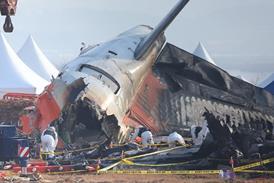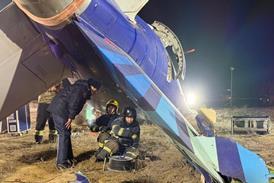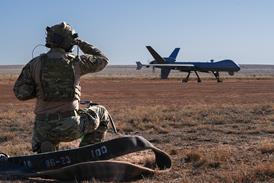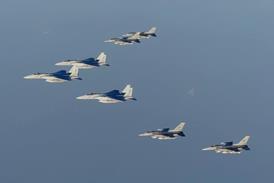French investigators believe the slope of a Nantes runway led a Boeing 737-800 pilot to misperceive the aircraft’s glidepath, resulting in a late flare and a hard bounced landing, during which the jet shed both nose tyres.
Nantes’ runway 21 initially dips beyond the threshold, then rises from the aiming point, says French investigation authority BEA.
The Transavia aircraft made an automatic ‘40’ height call-out while passing over the initial dip, and the first officer – who was flying manually while under line training – made a slight nose-up input, without reducing thrust.
But as the jet reached the rising part of the runway, and generated a ‘30’ call-out, the first officer pulled back the yoke rapidly and sharply, before idling the thrust levers.
This sudden action came too late to reduce the aircraft’s energy and, at a sink rate of 12ft/s, its main landing-gear contacted the runway with a 2.95g impact.
The aircraft bounced and its spoilers deployed.
BEA says the impact “surprised” both pilots and the instructing captain reflexively pushed the yoke sharply forwards, rapidly reducing the 737’s pitch.
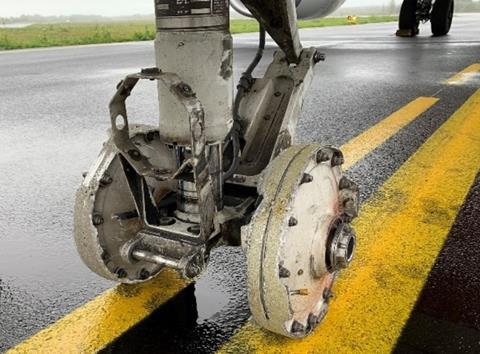
Combined with the loss of lift from the spoiler extension, this lessening of pitch caused the aircraft to descend quickly.
Its flat attitude resulted in the nose-gear and right-hand main gear contacting the runway simultaneously. The heavy impact ejected both nose-gear tyres and left the aircraft rolling on the rims.
The aircraft decelerated before turning left onto a taxiway and coming to rest. None of the 165 passengers or six crew members on the 737 (F-GZHA), which was arriving from Djerba on 1 October 2022, was injured.
BEA says the late flare probably resulted from “erroneous perception” of the final part of the flightpath, owing to the upward slope of the runway – adding that the pilots had primarily been focused on maintaining the runway axis.
It states that the runway profile – dipping then rising – had an effect on the automated height call-outs, which went from ‘30’ to ‘10’ in just 1s, over a flying distance of only 80m.
This “did not help” the first officer to initiate the flare and reduce thrust sufficiently early, the inquiry adds.
Given the crosswind conditions, a ceiling close to minima, and the first officer’s limited recent experience, flying the approach manually probably generated a high workload, with the runway profile adding to the stress.
BEA says the instructor captain’s familiarity with the Nantes runway 21 approach and the runway characteristics might have “minimised” his impression that the conditions could prove difficult for the first officer, particularly since the first officer had landed in a strong crosswind in Djerba.

